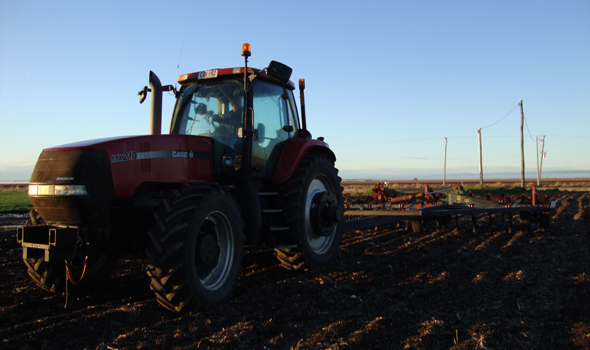
Sustainability shapes Queensland’s renewable future
Wind and solar power are among the plans for increased use renewable energy
 [/media-credit]
[/media-credit]
- Conventional cultivation has decreased in frequency as farmers switch to zero tillage.
Farmers reap benefits of sustainable practices
Zero tillage, global satellite positioning systems and controlled traffic farming are terms largely unheard of in the agricultural industry thirty years ago.
Today these systems are reshaping the industry as farmers shift towards a more sustainable future.
Practices such as zero tillage are not only more environmentally friendly; they can also significantly increase crop yields.
Research groups such as the CSIRO’s Sustainable Agriculture Flagship are continually working towards reducing Australia’s carbon footprint.
Deputy director of the CSIRO’s Sustainable Agriculture Flagship Dr Bronwyn Harch says the CSIRO is researching opportunities for reducing Australia’s greenhouse gas emissions through projects like improving understanding of carbon storage in soils and reducing livestock methane emissions.
“Agricultural innovation has achieved a lot through areas such as new crop varieties, better management of agricultural inputs like fertilisers, irrigation, mechanisation and agrochemicals and better management practices,” Dr Harch said.
“CSIRO has a significant program of research designed to tackle a national research need around sustainable agriculture because agricultural industries are critical to life as they produce food and other products.
“A key goal is to support Australian farmers, land managers and government agencies to understand and use landscapes to achieve high productivity, lower greenhouse gas emissions and improve environmental health,” she said.
Senior lecturer in the School of Agriculture and Food Sciences at The University of Queensland Dr Doug George believes making the agricultural industry more sustainable is the only option.
Dr George says it is a balancing act between economically producing food and looking after the environment.
“One of the simple ways to do this is to change to minimum or zero till,” he said.
Zero tillage is the term used when a paddock is not cultivated between the harvesting of a crop and the planting of the next one.
“You do not disturb the soil structure as much; there is more organic matter in the soil and keeping a cover on the soil helps to reduce erosion.
“Another way to make farming more sustainable is using crop and pasture rotations over three to four years or rotations with legume crops, which increase nitrogen so you are not as dependent on synthetic fertilisers.
“Most farmers want to maintain the soil quality so they can keep on farming down the track,” he said.
Jondaryan farmer David Loughnan made the switch to zero till several years ago.
Mr Loughnan says he decided to make the change because Australia does not receive enough rainfall and it was a way to keep more moisture in the soil.
“Zero till was the number one change we made and that brought about the use of GPS systems so you are on the same tracks,” he said.
“This makes rainfall storage more efficient and increases yield.”
Collaboration between researchers, industry and farmers will help in the continued fight to reduce emissions and increase productivity.
The ongoing research and advancements in technology assure the sustainable longevity of the agricultural industry.
Story by Melody Pedler
